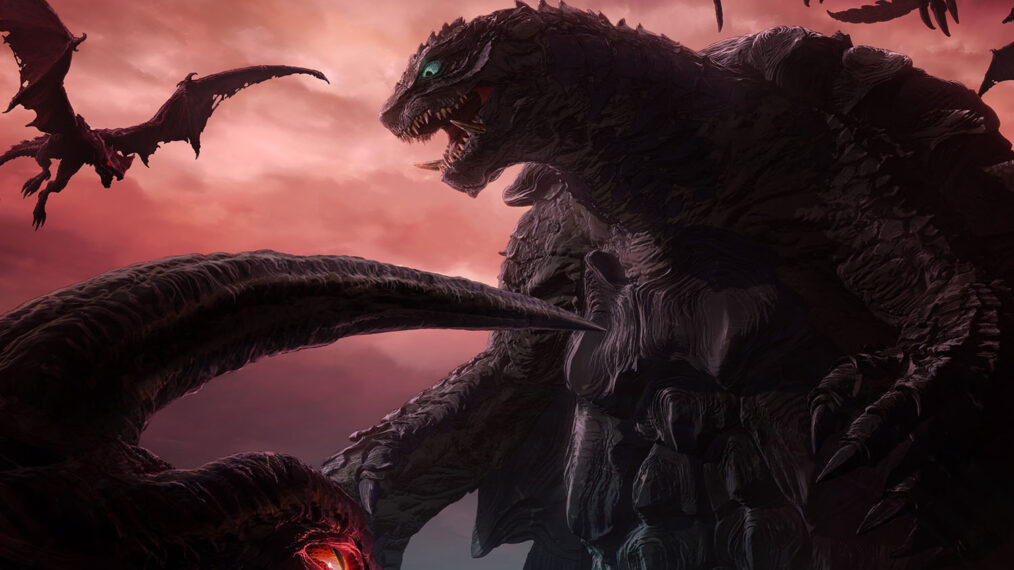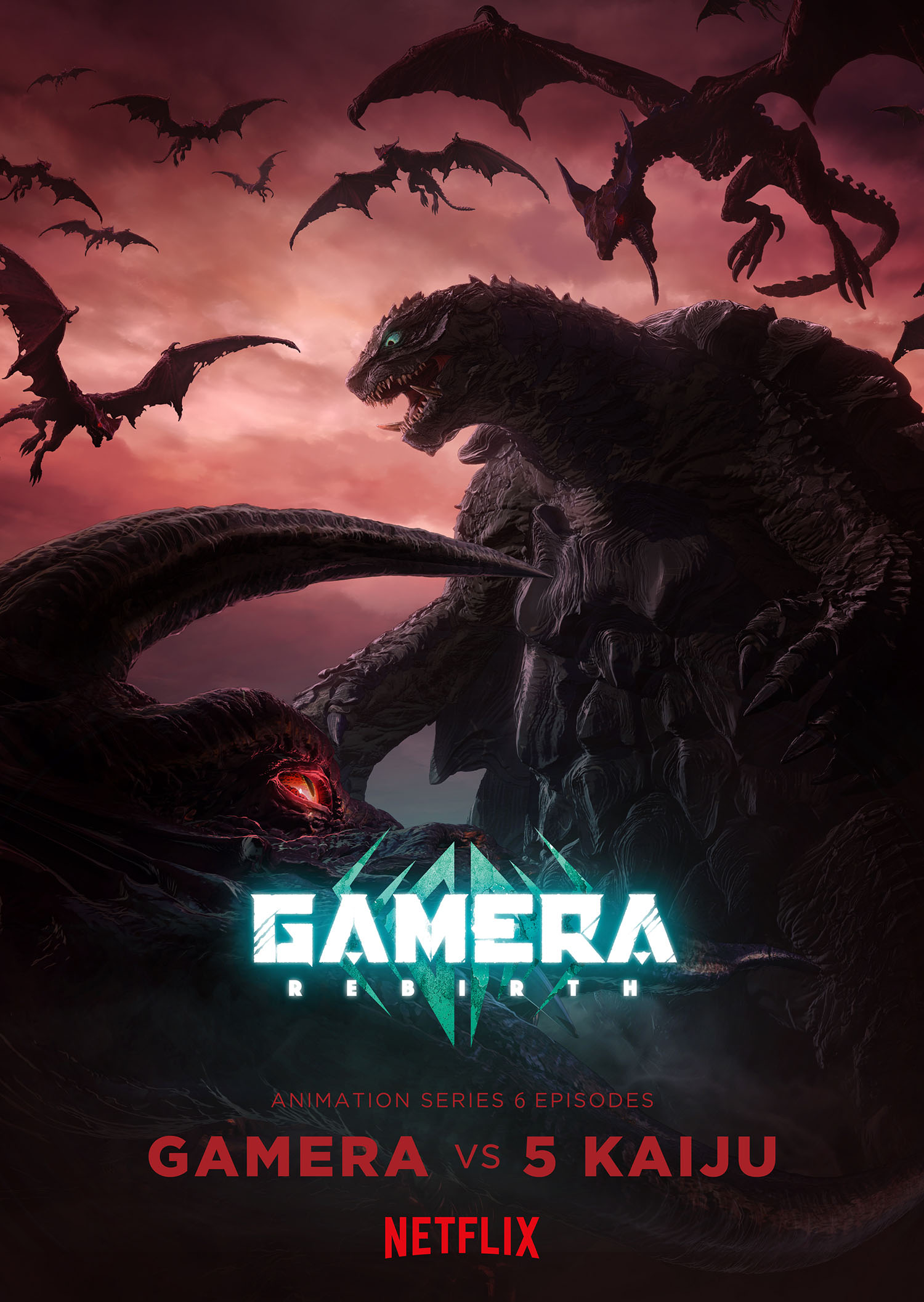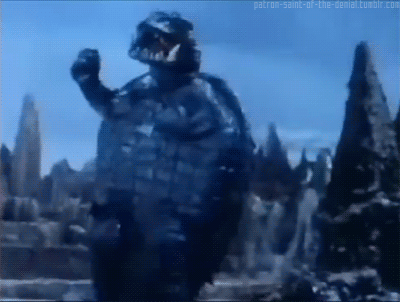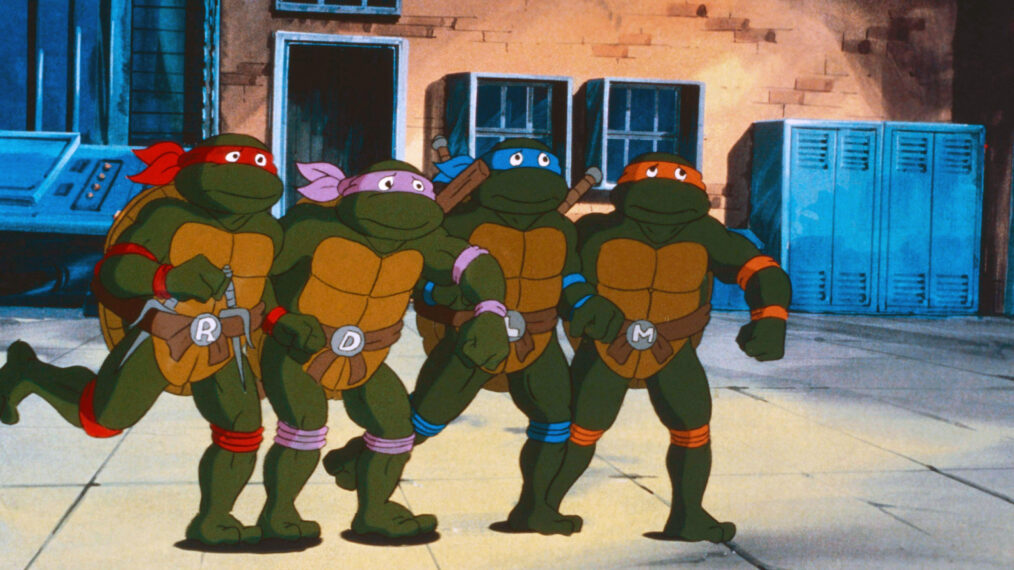‘Gamera: Rebirth’ — The Classic Kaiju Is Finally Coming Back Out of His Shell For a New Anime Series on Netflix

There’s been a lot of Godzilla talk lately, and rightfully so. That classic kaiju character recently got his own channel on Pluto TV, and he’ll be starring in his latest big-screen production from Japan’s Toho Studios, called Godzilla Minus One, later this year.
But it’s nice to be able to report some news about another one of my favorite classic Japanese monsters whose films I used to enjoy on creature-feature shows back in the day: Gamera, the giant, fire-breathing prehistoric turtle who could somehow fly by way of spinning around as fire shot out of the arm and leg holes in his shell, and who evolved into being a friend to all children in a series of movies originally produced by the now-defunct Daiei Film studio.
Gamera will star in the six-episode anime series Gamera: Rebirth, launching Sept. 7, 2023, on Netflix.

© ENGI Co., Ltd./Netflix
The second official trailer for the series, released July 23, shows that in Rebirth, Gamera will be taking on five classic enemies from the original live-action movies: Gyaos, Jiger, Zigra, Guiron and Viras.
One notable original Gamera foe not indicated here at this point is Barugon, but there still looks to be plenty of hardcore monster-fighting action, based on this pretty metal trailer that opens right away with a variation on Gamera’s unmistakable roar.
The first trailer for the series, released a few months ago, showed a little more of how Gamera may be “reborn,” and also offers a cool look at him in a full-body standing shot:
Sure, a limited animated series on Netflix isn’t quite up to having your own channel, or a major motion picture on the horizon, but it is good to finally see Gamera back in action again in something.
I suppose Gamera is used to playing second fiddle to Godzilla among Japanese kaiju characters, at least in America, where the giant flying turtle has not had nearly the pop-culture saturation that the radioactive lizard has had.
A big part of that is simply that there were nowhere near as many Gamera movies as there have been Godzilla movies. Godzilla will soon be leading his 30th live-action feature film in the past 70 years (and that’s only counting the Japanese productions); meanwhile, there have been 12 Gamera movies over about 60 years, certainly not enough to base an entire TV channel around.
Following his debut in 1965’s Gamera, The Giant Monster (released in America in a much-changed version titled Gammera the Invincible), Gamera starred in one movie a year between 1966 and 1971.
Aside from the first movie, none of those titles were released in American theaters, but went straight to television.
That’s where I eventually started seeing and enjoying them in the late ’70s/early ’80s, on some Saturday afternoon creature-feature show or another, and knowing some of them only by their retitled names (for U.S. television, Gamera vs. Barugon was retitled as War of the Monsters, Gamera vs. Guiron became Attack of the Monsters and Gamera vs. Jiger was known as Gamera vs. Monster X).
Unfortunately, Daiei’s ongoing financial troubles starting in the early ’70s kept Gamera off-screen for a long time after these initial movies. He turned up in 1980’s Gamera: Super Monster, which was basically a “greatest-hits” sort of thing filled with tons of stock footage from earlier films.
Then, there was a 15-year lag before he returned in the mid ’90s with Gamera: Guardian of the Universe (1995), Gamera 2: Attack of Legion (1996) and Gamera 3: Revenge of Iris (1999). Interestingly, while produced by Daiei, these ’90s Gamera films were distributed by Toho, the studio behind rival kaiju Godzilla.
After Daiei eventually went under in 2002, there was one more Gamera title from another studio, 2006’s Gamera the Brave, before he again went into hibernation.
But Gamera appears to be coming out of that slumber to some degree 17 years later in Gamera: Rebirth, with the “Rebirth” part of the title fitting for both the story and for Gamera’s reinvention on the small screen, where he has been most familiar to American audiences, I would imagine.
It will be good to see him again. While I’ve always been more of a Godzilla guy, I do love Gamera, and I watched his movies back when they were in regular rotation on TV. While even then I could tell the special effects were lesser than those of the Toho productions, they were still a lot of fun. And they sometimes featured scenes every bit as wonderfully silly as Godzilla doing a victory dance or performing a physics-defying drop-kick.

But the Gamera movies also seemed to have more of an edge to them in some cases, and they were able to actually scare me more than the Godzilla films did. One of Gamera’s enemies, the vampire-bat-like Gyaos, was especially creepy to me.
While the flying turtle was a “friend to all children,” that often required him to save children who were in peril from monsters like Gyaos or alien invaders, and as an 8-to-10-year-old, I found some of those sequences frightening.
There was sometimes more violence in the Gamera movies, as well; I remember seeing blood (albeit usually blue-colored) spewing from Gamera or another kaiju in some of these movies before I eventually also saw spurting blood (of the red sort) in some of the early ’70s Godzilla productions.
Given that sort of edge, the hardcore vibe from these trailers for Gamera: Rebirth seems appropriate. Hopefully the series will be an impetus for Gamera’s eventual rebirth in live-action, where he will finally be given a budget and distribution that he deserves.

